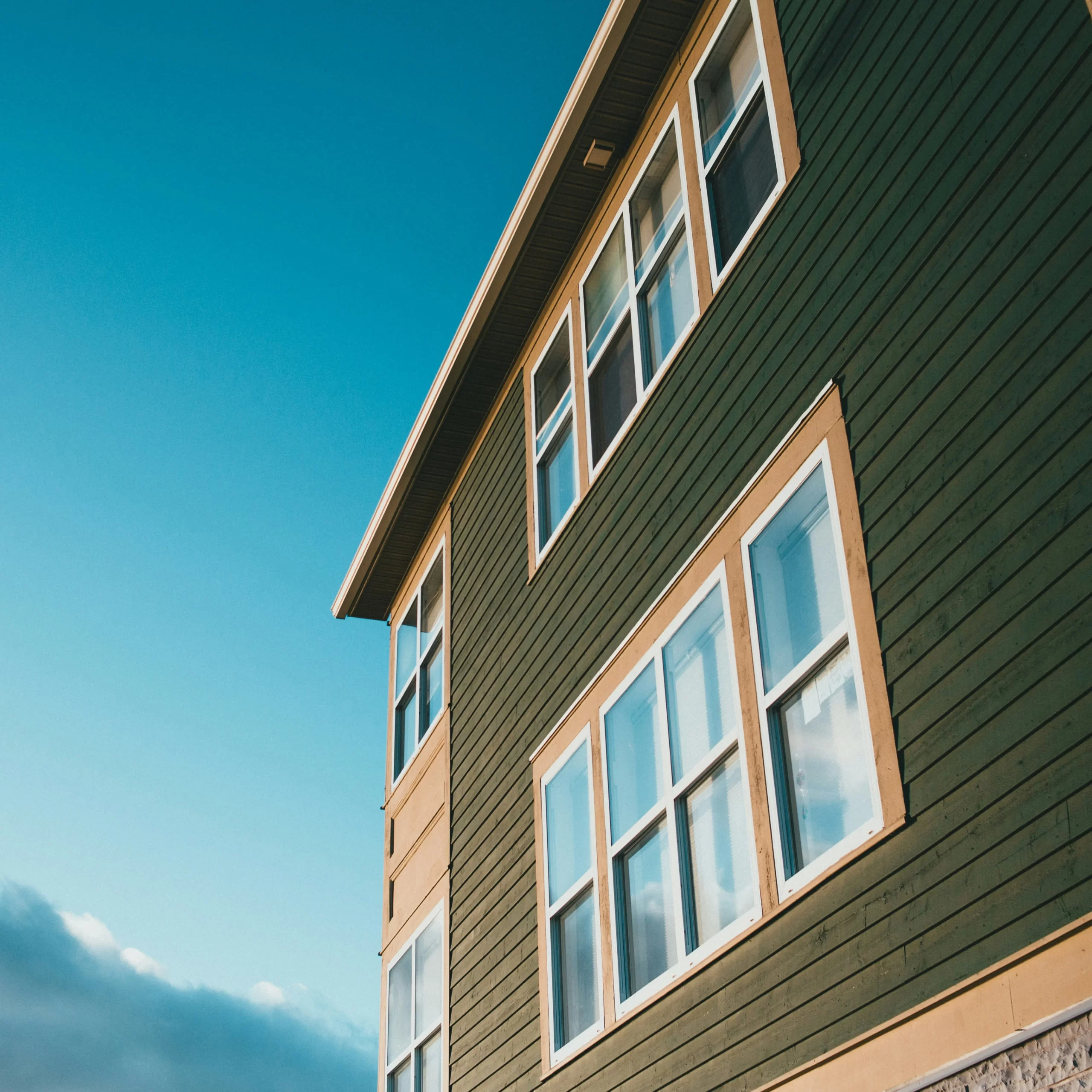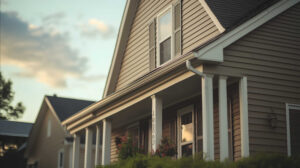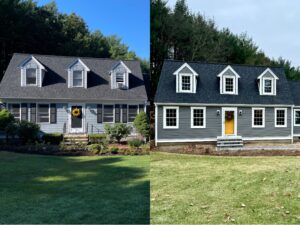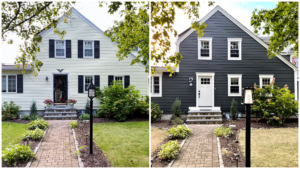

President at Plum ProExteriors
Top Alternatives to Vinyl Siding: Best Choices for Your Home’s Exterior

Vinyl siding has long been popular for homeowners seeking a durable and low-maintenance exterior finish. However, as more people focus on aesthetics, environmental impact, and long-term value, the search for alternatives to vinyl siding has grown. Whether you’re remodeling an old house or building a new one, understanding the variety of siding options available can help you make an informed decision that enhances your home’s beauty and functionality.
This article explored some of the most significant alternatives to vinyl siding, examining their benefits and suitability for different climates and architectural styles. Let’s discover the perfect siding solution that aligns with your vision and budget.
Main reasons to consider vinyl siding alternatives
Selecting the right siding for your home is a critical decision that impacts not only the appearance but also the durability, energy efficiency, and overall value of your property. While vinyl siding is recognized for its affordability and low maintenance, several compelling reasons exist to explore alternatives. Analyzing the advantages of these alternatives can help you make a more informed decision that aligns with your long-term goals and preferences.
Below are some essential reasons for considering vinyl siding alternatives for your home.

1. Superior durability
One significant advantage of opting for alternatives to vinyl siding is enhanced durability. Vinyl siding can be susceptible to damage from extreme weather conditions (high winds, hail, and temperature fluctuations). Alternatives often offer greater resilience against these elements, reducing the possibility of cracks, warping, and other forms of damage. This durability translates to fewer repairs and replacements over the lifespan of the siding, ultimately saving you time and money.
2. Enhanced aesthetic appeal
While vinyl siding is available in various colors and styles, it can sometimes lack the depth and richness of natural materials. Alternatives often provide a more authentic and visually appealing look that enhances your home’s curb appeal. Whether you prefer a modern, rustic, or traditional aesthetic, these affordable siding options offer the versatility needed to achieve your desired style. The enhanced aesthetic appeal can also grow your home’s market value, making it more attractive to potential buyers.
3. Environmental benefits
Environmental considerations are becoming increasingly important for homeowners. Vinyl siding is made from polyvinyl chloride (PVC), a type of plastic that can have negative environmental impacts during production and disposal. Many alternatives are made from more sustainable materials with a lower ecological footprint. These materials may be renewable, recyclable, or produced using less energy-intensive processes. By choosing environmentally friendly and affordable siding options, you can reduce your home’s impact on the planet and contribute to a more sustainable future.
4. Better energy efficiency
Energy efficiency is critical for many homeowners, as it directly impacts utility bills and overall comfort. Vinyl siding does not provide significant insulation benefits. On the other hand, many vinyl siding alternatives deliver better insulating properties, allowing them to keep a stable indoor temperature throughout the year. Enhanced insulation decreases the need for heating and cooling, leading to lower energy bills and a smaller carbon footprint. Improved energy efficiency also contributes to a more comfortable living environment, regardless of the season.
5. Improved fire resistance
It is vital to understand that fire safety must be a top priority for any homeowner. While vinyl siding is not highly flammable, it can melt and release toxic fumes when exposed to high heat. However, vinyl siding alternatives often offer superior fire resistance, protecting your home and family. Improved fire resistance can be particularly beneficial in areas prone to wildfires or where building codes require higher fire safety standards. Selecting siding with better fire-resistant properties can give you peace of mind and potentially reduce insurance premiums.
6. Low maintenance requirements
Although vinyl siding is known for being low maintenance, it still requires periodic cleaning to prevent mold, mildew, and discoloration. Many home siding replacement options require even less maintenance, thanks to their inherent properties that resist common issues like fading, rotting, and insect damage. This reduced maintenance means you can spend less time and effort on upkeep and more time enjoying your home. Moreover, lower maintenance needs can result in long-term cost savings, as you won’t have to invest as much in cleaning supplies, repairs, or replacements.
Best vinyl siding alternatives
When considering an upgrade to your home’s exterior, vinyl siding might seem obvious due to its affordability and ease of installation. However, numerous alternatives to vinyl siding offer unique benefits, including improved durability, aesthetic appeal, and environmental advantages. Here, our experts show some of the leading vinyl siding alternatives, each providing distinct features that can enhance the look and functionality of your home. Let’s check them together!
Fiber cement siding
At Plum ProExteriors, we deliver top-notch fiber cement siding services, providing expert installation and maintenance to ensure your home benefits from all the advantages this material offers. As one of the best vinyl siding alternatives, this siding stands out for its remarkable durability and adaptability, making it a popular choice for homeowners seeking a robust and aesthetically pleasing exterior. Composed of a mixture of cement, sand, and cellulose fibers, this siding can convincingly mimic the appearance of wood, stone, or stucco, offering a high-end look without the associated maintenance challenges.
One of the primary benefits of fiber cement siding is its resistance to fire, insects, and rot. This makes it an excellent choice for homes in areas prone to wildfires or termite infestations. Fiber cement siding can withstand harsh weather conditions, including high winds, heavy rain, and hail, ensuring your home remains protected year-round.

Wood siding
At Plum Plum ProExteriors, our wood siding offers a timeless, natural beauty that is difficult to replicate with synthetic materials. Available in various styles, such as clapboard, shingles, and shakes, it provides flexibility in design, allowing homeowners to create a unique and personalized exterior. The natural grain and texture of wood siding add character and warmth to any home, making it a favorite for those seeking a classic and inviting look.
One advantage of wood siding is its ability to be painted or stained in a multitude of colors, enabling homeowners to easily match their aesthetic preferences. Additionally, wood siding provides excellent insulation, helping to maintain a comfortable indoor temperature and potentially reducing energy costs.

Want a modern home aesthetic? Let us take care of your siding needs. Contact us.
Composite siding
Among the best alternatives to vinyl siding, our composite siding is engineered from a combination of wood fibers, plastics, and other materials, offering the best qualities of each. This innovative siding option mimics the appearance of natural wood while providing enhanced durability and lower maintenance requirements. Composite siding is resistant to rot, insects, and weather damage, making it a long-lasting and reliable choice for any home.
One of the prior benefits of composite siding is its ability to be painted or stained in a variety of colors, allowing homeowners to easily achieve their desired look. Composite siding also provides excellent insulation, contributing to energy efficiency and helping to maintain a comfortable indoor temperature.

Stone or faux stone siding
As one of the top home siding replacement options, our stone siding exudes luxury and timelessness, offering exceptional durability and natural beauty. While natural stone can be expensive and labor-intensive to install, faux stone siding provides a more affordable and lightweight alternative that closely mimics the appearance of real stone. Both natural and faux stone options offer excellent resistance to weather, fire, and pests, ensuring long-lasting protection for your home.
One of the primary benefits of stone siding is its ability to enhance the architectural appeal of a home. The rich textures and colors of stone can significantly increase curb appeal and property value, making it a worthwhile investment. Stone siding requires minimal maintenance, as it is resistant to fading, cracking, and other common issues. This long-lasting durability makes it a practical choice despite the higher initial cost.

Above, we have listed the alternatives to vinyl siding that our company delivers. Below, we will present a general overview of other available siding options. Let’s check them in more detail!
Stucco-style siding panels
Within affordable options to replace vinyl siding, these siding panels provide a distinctive, textured look that can enhance the architectural appeal of any home. Made from a mixture of cement, sand, lime, and water, stucco is applied in layers to create a durable, seamless finish. Stucco siding is highly resistant to fire and provides excellent insulation, helping to regulate indoor temperatures and improve energy efficiency.
Among various benefits of stucco siding, its ability to be customized with multiple colors and finishes allows homeowners to achieve their desired aesthetic. The textured surface of stucco adds depth and character to a home’s exterior, making it an attractive choice for many architectural styles.

Want to modernize your home? Trust Plum ProExteriors for all your siding services. Contact us.
Polymer siding
This siding is one of the most adaptable and long-lasting alternatives to vinyl siding made from high-quality polymers with enhanced performance and longevity. This type of siding is resistant to impact, moisture, and extreme temperatures, making it a reliable choice for various climates. Polymer siding can be molded into different shapes and textures, closely mimicking the look of natural materials like wood or stone.
One critical benefit of polymer siding is its low maintenance requirements. The color is embedded throughout the material, so it does not need to be painted and is resistant to fading, scratching, and chipping. Polymer siding is also energy-efficient, providing better insulation than traditional vinyl siding and helping to reduce heating and cooling costs.

Choosing the best option for you
Choosing the right siding for your home is a decision that balances durability, maintenance, and cost. While vinyl siding has its advantages, exploring vinyl siding alternatives can reveal options that better align with your specific needs and preferences. Ultimately, the best siding for your home will depend on your priorities, whether they are rooted in aesthetic appeal or environmental considerations.
At Plum ProExteriors, we specialize in helping homeowners make informed decisions about their exterior siding options. Our experienced professionals provide high-quality installation and maintenance services tailored to your specific needs. If you’re considering alternatives to vinyl siding, let us guide you through the selection process and ensure you achieve the perfect look and durability for your home. Contact us today to take the first step toward enhancing your home’s exterior!





